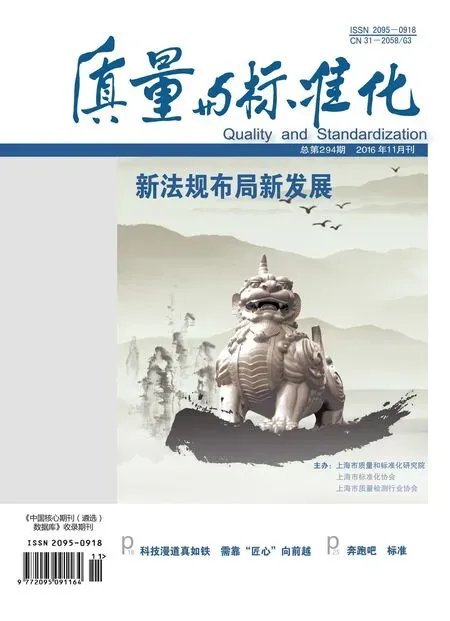奔跑吧 标准
2016-04-12五花肉
文/五花肉
五环漫谈 The Story of the Olympics
奔跑吧 标准
Speed up, Standards
文/五花肉
短跑,是体育运动中最古老的运动。古希腊有句名言:“如果你想聪明,跑步吧!如果你想健壮,跑步吧!如果你想健康,跑步吧!”据史料记载,在公元前776年的第一届古代奥运会上,唯一进行的竞技项目就是短跑。
Sprint is one of the most ancient sports in the world. The ancient Greek used to say, if you want to be smart then run, if you want to be strong then run, if you want to be healthy then run. According to historical records, sprint was the only athletic competition in the first Olympic Games of 776 B.C.
短跑,400米(含)以内的比赛项目。人们用最快的速度跑完规定的距离,是人体运动器官和内脏器官在大量缺氧的条件下完成最大强度的工作,属于极限强度的运动。短跑能有效地发展速度素质,因此是田径运动的基础项目,在其他运动项目的训练中也占有重要的地位。
Sprint is a race over short distance (within and including 400 metres). When running over a specific distance at maximum speed, an athlete's locomotive and visceral organs must be functioning well under the hypoxia condition. Therefore, sprint is an extreme sport. Since sprint can help develop speed quality effectively, it is a basic event in track and field and plays an important role in the training of other sports.
距离标准的形成Development of Distance Standard
现代短跑起源于欧洲。1850年,英国牛津大学运动会设有100码、330码、440码跑项目,这是最早的现代短跑项目正式比赛。19世纪末,赛跑距离单位由码制改为米制。
Modern sprint originated in Europe. In 1850, Oxford University set up the 100-yard, 330-yard, and 440-yard sprints in the student sports meeting, which is known as the first formal modern sprint competition. In theend of 19th century, the distance unit was altered from yard to meter.
1896年,第一届现代奥运会上,男子短跑被列为比赛项目,设100米及400米跑两项,标志着现代短跑运动的正式确立。随后又出现了200米短跑及4×100米接力赛等,短跑的标准距离逐渐形成并固化。
In 1896, 100-metre and 400-metre men's sprints were set as competition events in the first modern Olympics, which marked the formal establishment of modern sprint. With the arise of 200-metre sprint and 4×100-metre relay, the standard distance was gradually developed and settled.

姿势标准:“蹲踞式”起跑Position Standard: Crouch Start
最初的短跑比赛中运动员可以采取任意姿势起跑,没有标准规范。现在盛行的蹲踞式起跑是一位美国人在澳大利亚旅游时,从袋鼠身上受到启发创造出来的。1896年,第一届现代奥运会上,美国选手托马斯・伯克采用了近似于“蹲踞式”方式起跑,夺得了冠军,被称为“第一个蹲着起跑的人”。
There were no rules for the start position in the early time of sprint history. The prevailing crouch start was created by an American inspired from kangaroo when traveling in Australia. In the first modern Olympics held in 1896, Thomas Burke,an American sprinter, applied a way similar to the crouch start, and won the gold medal. Then he was referred to as the first sprinter running in the crouched stance.
人们发现从物理学和力学角度看,这种起跑姿势能够让运动员在极短的时间内摆脱静止状态,获得较大的初速度,利于创造更佳的成绩。1936年,第11届奥运会,首次采用蹲踞式起跑标准,要求所有选手必须使用蹲踞式起跑,并使用助跑器。起跑姿势标准的确定,大大提高了短跑运动员的整体竞技水平和比赛成绩。
From the aspects of physics and mechanics, this start position can give the sprinter a large initial velocity by altering the stationary state, which helps improve his/her performance. In 1936, the 11th Olympics introduced crouch start standard, which required the sprinters to follow the crouch start standard and to use the starting blocks. The establishment of start position stand and has greatly enhanced sprinter’s athletics level and performance.
选材标准:步频和步幅Candidate Standard: Stride Length and Frequency
短跑是以无氧代谢供能为主的极限强度运动,决定短跑竞技水平的速度能力、动作频率及无氧耐力等因素,在很大程度上是由先天遗传因素决定的,因此,短跑运动员选材显得尤为重要。
Sprint is an extreme sport mainly involving anaerobic metabolism energy-providing event. Genetic factors, to a large extent, decide the athletics level including speed, stride frequency, anaerobic endurance, etc. Therefore, the talent selection becomes particularly important.
身高一直是短跑选材的重要标准,相关数据显示,国际优秀短跑运动员的平均身高是1.85米,国内的优秀短跑运动员身高集中在1.80米到1.85米之间。但在长期的训练和竞技过程中,人们逐渐发现身高并不会对短跑成绩产生实质性影响,尤其是在同等身高条件下,步频和步幅则是影响短跑成绩的重要标准。合理的途中跑标准是步幅开阔、步频较快、蹬伸有力、摆动积极、动作轻松、向前效果好、重心稳定、躯干保持适度前倾、摆臂积极有力、直线性好。
Height is an important standard for selecting sprint talent. Statistics show that world-top sprinters' average height is 1.85 m; domestic top sprinters' height is between 1.80 m and 1.85 m. During longterm training and competition, people found height would not have substantial effects on the performance. Especially under the same height condition, stride length and frequency are the key factors affecting the performance. The reasonable intermediate running form is wide stride, fast stride frequency, fully extending legs, active body swinging, moving with ease, good forward effect, stable core, body reaching forward, swinging arms powerfully, and going straight.
亚洲百米跑道近年刮起的“小个子风”, 苏炳添、桐生祥秀等优秀短跑选手身高都不足1.75米。正是基于选材标准的日趋科学合理,那些身高不具备优势的短跑人才得以崭露头角。
Recent years, short athelets become popular in the Asian 100-metre event. Both of the height of excellent sprinters like Su Bingtian and Tong Shengxiang are no more than 1.75 m. Since the talent selection tends to be more scientific and reasonable, the sprint talents who do not have height advantage are emerging.
结 语Conclusion
短跑作为奥林匹克运动的基石,是奥林匹克“更快、更高、更强”精神的最佳体现者。每届奥运会,100米、200米等项目总能吸引最多观众的目光。
As the cornerstone of Olympic Games, sprint is the best reflection of the "faster, higher, and stronger" Olympic spirit. 100-metre and 200-metre sprints always attract a lot of attention in every Olympic Games.
追求速度的梦想,激励人们不断挖掘潜能、挑战极限;标准,见证着短跑技术的去芜存菁,伴随着奔跑者追逐梦想……
The dream of pursuing speed stimulates people to exploit their potential and to challenge the limits constantly. Standards, are witnessing sprint techniques have been optimized, and accompanying the runners to chase the dream.
(支持单位:上海市质量和标准化研究院)
